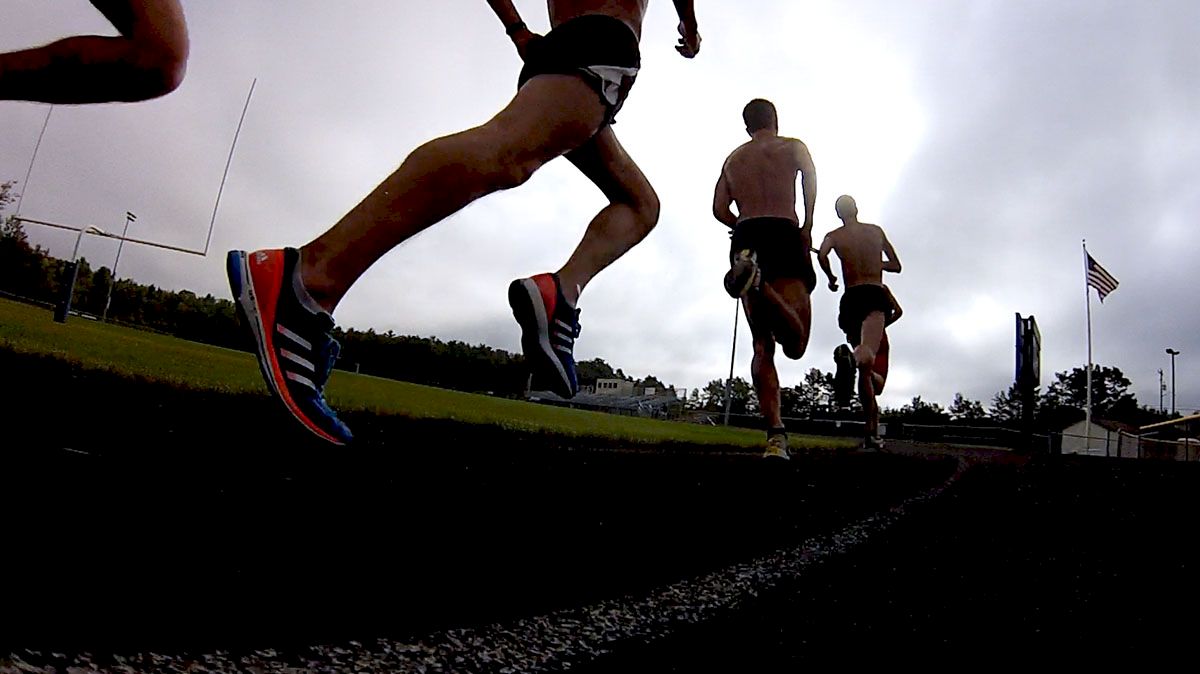Running and Your Mood
Running and Your Mood

Why do you run? One of the reasons that many of us go pound the pavement or hit the trails is that it running makes people feel happy and content. It's unclear if this good feeling comes due to an increase in endorphins, from enjoying the environment, or from getting one step closer to reaching goals related to running. But what we do know is that, more often than not, people are in a better mood after their run than they were before. Extensive research has indicated that exercise leads to increases in positive affective states and decreases in negative affective states upon completion (Reed & Ones, 2001).
Even though the literature is conclusive, not every run feels good and leaves the athlete or exerciser in a better mood upon completion. Also, people are generally motivated to partake in activities that feel good and stay away from things that feel bad, but many people still do not run regularly. Research now suggests that the intensity of running may influence the likelihood of experiencing a more positive mood after exercise. Ekkekakis, Hall, and Petruzzello (2004) conducted assessments of perceived activation (high or low arousal) and affective valence (good or bad feelings) every minute during a graded maximal exercise test on treadmill. Heart rate, perceived activation, and perceived exertion rose in a continuous linear fashion throughout the exercise bout. Affective valence, however, dropped suddenly after the ventilatory threshold was crossed. (The ventilatory threshold is the point during exercise where ventilation increases disproportionately with the oxygen that is consumed. This excessive ventilation or breathing is often related to the buffering of lactic acid(McArdle, Katch, & Katch, 2006)). In other words, people reported good feelings when running below and at ventilatory threshold. But individuals started feeling bad when they were asked to run at speeds that caused them to exceed their ventilatory threshold.
Performing a tempo run or threshold run at roughly half-marathon pace or a little faster allows runners to exercise close to the ventilatory threshold. Training faster than this may cause runners to feel bad for several reasons from a psychological standpoint. Negative affect may represent a conscious understanding that a certain state of exertion cannot be maintained by the body (Damasio, 1995). Individuals can only operate via anaerobic pathways for a short amount of time before slowing down or damaging the body (McArdle et al., 2006). In other words, the good feelings we have to running may be in response to what is good for our body. But negative feelings or moods may occur in response to strenuous exercise so that humans protect themselves from injury or excessive fatigue (Remember, the feelings we have now may be tied to our evolutionary history. At that time, excessive fatigue and depleted energy would not have allowed us to escape from predators and injury could render the developing human useless out in the wild). Thus, negative affective states should be associated with prolonged anaerobic exercise, but experience of positive affective states should reward the body for the cessation of such exercise, as this promotes health and safety for the body.
Unfortunately, the old adage "too much of a good thing" certainly applies here. Just as some running, particularly at threshold pace, can improve affect post-exercise, too much running can dampen affect. In fact, a change of mood is one of the psychological indicators of overtraining. You may be able to detect overtraining yourself if you notice dips in your level of happiness, even when other aspects of life are the same. You may also feel listless and lack libido, in addition to those feelings of apathy or mild depression. Leg soreness or fatigue is also a sign of overtraining, but it can be hard to distinguish when soreness or tightness changes from normalcy to a symptom of overreaching or overtraining. However, change in day-to-day mood is often the first sign of the overtraining syndrome and often occurs before unusual amounts of fatigue or diminished performance (Raglin, Koceja, Stager, & Harms, 1995). So your mood will not always respond positively to running and could even worsen if you run too much.
We happy few runners are not alone in the realization that we feel better after a run than we did before. Science has suggested that everyone can consistently achieve these positive feelings if they exercise at or below the ventilatory threshold. Runners often perform their tempo runs at roughly this intensity. Of course it is also important to do intervals much quicker than threshold pace in oder to get faster. It is also key to include recovery runs to absorb the training. But if you are really looking to go run away from your problems and feel better when you untie your shoes, try a threshold run.
I can be reached for questions or comments at bryanloy@ymail.com
References
Damasio, A. R. (1995). Toward a neurobiology of emotion and feeling: Operational concepts and hypotheses. Neuroscientist, 1, 19-25.
Ekkekakis, P., Hall, E. E., & Petruzzello, S. J. (2004). Practical markers of the transition from aerobic to anaerobic metabolism during exercise: Rationale and a case for affect-based exercise prescription. Preventive Medicine, 38,149-159.
McArdle, W. D., Katch, F. I., & Katch, V. L. (2006). Exercise physiology: Energy, nutrition, and human performance (6th ed.). New York: Lippincott, Williams, and Wilkins.
Raglin, J. S., Koceja, D. M., Stager, J. M., & Harms, C. A. (1995). Mood, neuromuscular function, and performance during training in female swimmers. Medicine and Science in Sports and Exercise, 372-377.
Reed, J. & Ones, D. S. (2006). The effect of acute aerobic exercise on positive activated affect: A meta-analysis. Psychology of Sport and Exercise, 7, 477-514.